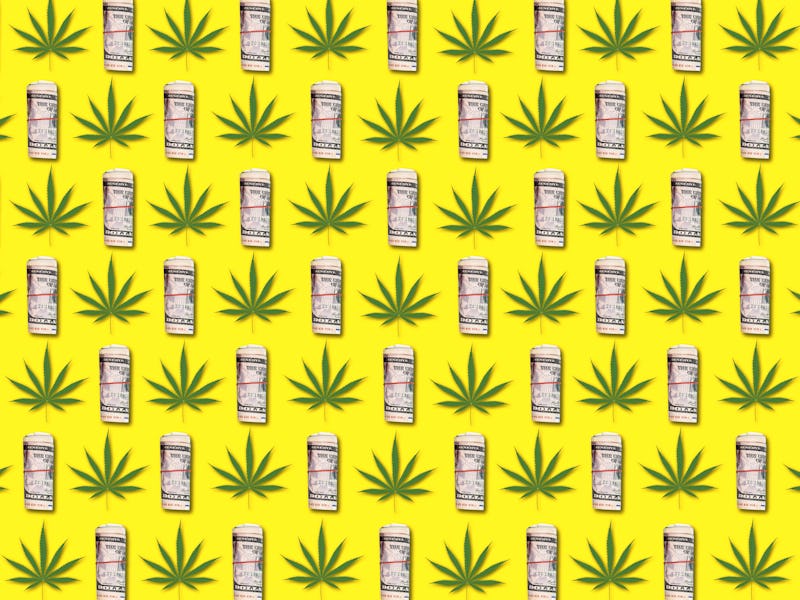Indica vs. sativa: A cannabis expert explains whether these two products are actually different
There’s a long history behind the two frequently discussed plants.

Peruse the products at any cannabis dispensary in America, and you’ll see two words over and over again: Indica and sativa. Cannabis indica, your local budtender will tell you, refers to one type of cannabis plant; Cannabis sativa refers to another. The theory goes that products containing sativa are more likely to make you feel social, energetic, and creative, while products containing indica are more likely to make you feel drowsy, relaxed, and hungry.
But is that true? “Indica and sativa used to be a much more significant distinction than it is now,” Peter Grinspoon, a professor at Harvard Medical School and author of the forthcoming book, Seeing through the Smoke: A Cannabis Specialist Untangles the Truth about Marijuana, tells Inverse.
Here’s why we associate distinctive effects with indica and sativa, how that changed over time, and how we should think about the labels in your local dispensary.
What are the differences between the Cannabis sativa and Cannabis indica plants?
According to Grinspoon, the distinction between the two types of cannabis is botanical.
Picture Nicole Kidman and Danny Devito standing next to each other. Physically, Devito would be closer to an indica plant: short and bushy. Kidman would represent the sativa plant: tall and slender with long limbs. Sativa is native to hot, dry climates with long sunny days, like Africa, Central America, and Southeast Asia. Indica is native to Afghanistan, Turkey, India, and Pakistan.
“If you were to get a really pure indica, it does make people sleepy, hungry, and relaxed,” Grinspoon says. “If you get a pure sativa, which is really hard to get, it makes you feel energetic, focused, and creative. Those are the two ends of the spectrum of the effects that cannabis can cause, with the caveat that different people react to different strains differently.”
How did we go from pure indica and sativa to what we have now?
In the 1980s, when Reagan was ramping up the War on Drugs, he sent helicopters out looking for outdoor cannabis grows as part of an operation called CAMP (Campaign Against Marijuana Production).
“Sativa [plants] were like sitting ducks because they were really tall and easily seen by federal agents in the helicopters,” Grinspoon says. “But the breeders were resourceful...they bred [indica and sativa] together.”
If Nicole Kidman and Danny Devito had a baby, that baby would likely grow up to be shorter than Kidman. Thus, in the case of cannabis plants, a hybrid of indica and sativa is less likely to be identified by federal agents in helicopters than pure sativa.
In the 1980s, when Reagan was ramping up the War on Drugs, he sent helicopters out looking for outdoor cannabis grows as part of an operation called CAMP (Campaign Against Marijuana Production).
“Almost all of what we have today is hybrid; it's very rare to find a pure sativa or a pure indica,” Grinspoon says. “Researchers have studied the genetics and found that there’s no correlation whatsoever between what the sativa and indica you see in a dispensary and true indica and sativa plants because they've mostly been hybridized.”
Indica and sativa plants are possible to find, Grinspoon notes, so if you know the grower, you may be able to access true indica or sativa products.
But for the most part, Grinspoon says, “these days, indica and sativa is a completely nonsensical distinction.”
Why indica and sativa may still be valuable labels, even if they’ve drifted from a botanical distinction
While most products labeled either indica or sativa don’t have much connection to true indica or sativa plants, Grinspoon says there may be a different benefit to the ubiquity of the terms. “Even if sativa and indica have lost their connection to the botanical plants, I think people use the word sativa in a dispensary to talk about a strain that might be uplifting, and they use the word indica to indicate a strain that might be relaxing,” he says.
These terms may give cannabis users and people working in dispensaries a common language to describe the common effects of one product compared to another.
Grinspoon says there is the possibility that “it’s all marketing. But I tend to give people the benefit of the doubt that if they’re recommending sativa, they believe [the product] is uplifting versus indica, which would be more relaxing,” he says.
The persistent belief in sativa and indica labels in a hybridized world may boil down to the power of suggestion. Grinspoon says he frequently jokes with a friend who is a cannabis researcher that if they took 100 people and told one half they were getting an indica product that would make them relaxed and the other half they were getting a sativa product that would make them energetic and creative, those are the effects the participants would experience.
“The power of suggestion plays a big role here,” he says.
What matters more than the indica or sativa label
The fuzzy line between the current iteration of indica and sativa products doesn’t mean all cannabis products are created equal.
“What's important is what is in the cannabis,” Grinspoon says. “We're learning more about what terpenes do.” Terpenes are compounds that can affect the scent and flavor of different strains of cannabis. They may also contribute to how the various strains affect the consumer.
“We’re also learning more about the other minor cannabinoids,” he says. “We’re just beginning to understand these properties.”
This article was originally published on